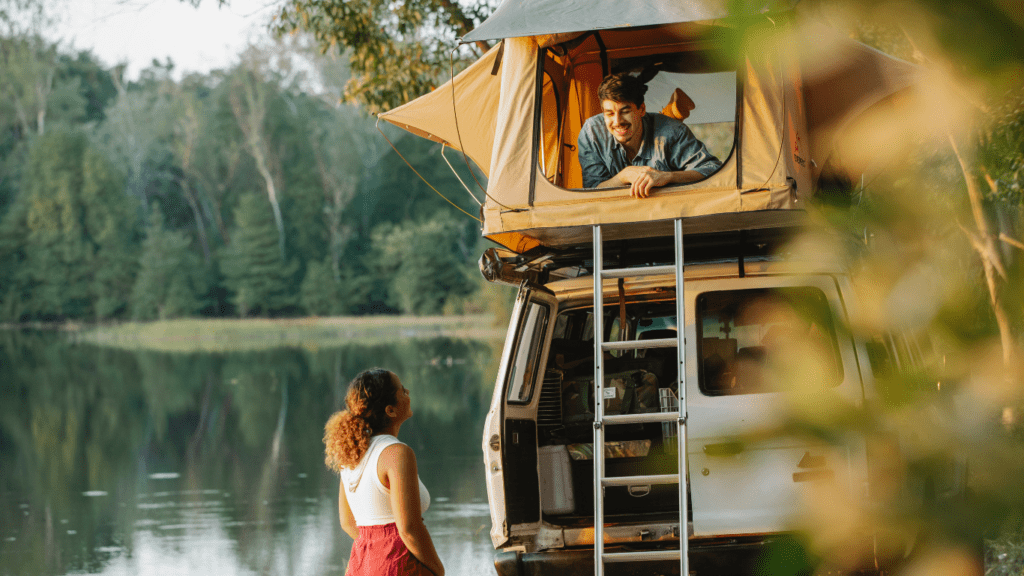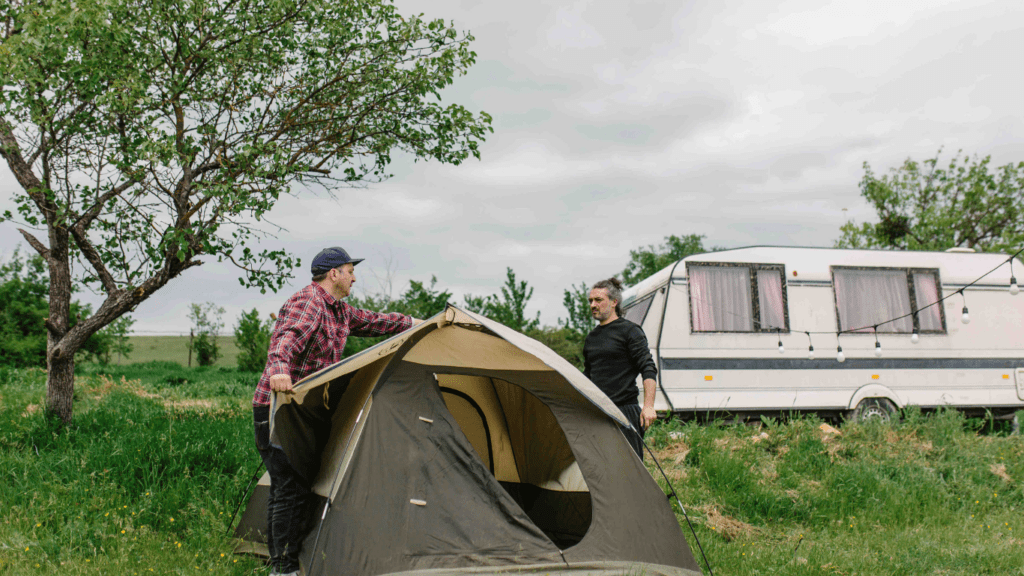Venturing into the wilderness offers a sense of freedom and adventure unlike any other. As an avid outdoor enthusiast, I’ve discovered that backcountry camping is the epitome of immersing oneself in nature’s embrace. In this comprehensive guide, I’ll share invaluable tips and tricks to make your backcountry camping experience unforgettable.
From choosing the perfect remote location to packing essential gear efficiently, I’ll cover everything you need to know to embark on your backcountry journey confidently. As I delve into topics like Leave No Trace principles and wildlife safety, you’ll gain a deeper understanding of how to respect the environment and stay safe during your wilderness escapades.
Join me as I take you on a virtual exploration of the backcountry, equipping you with the knowledge and confidence to embrace the great outdoors like never before.
Overview of Backcountry Camping
Backcountry camping is a thrilling outdoor activity that allows me to connect with nature authentically. It provides a unique sense of freedom and adventure that traditional campgrounds may not offer. In this guide, I’ll delve into essential aspects of backcountry camping to help you prepare for an unforgettable experience in the wilderness.
Remote Locations for Backcountry Camping
Exploring remote locations is a hallmark of backcountry camping. These serene spots offer a peaceful escape from the hustle and bustle of everyday life. When selecting a remote location for your camping trip, consider factors such as proximity to water sources, terrain difficulty, and any necessary permits. By choosing a secluded area, you can immerse yourself in nature and enjoy the solitude it provides.
Essential Gear for Backcountry Camping
Packing the right gear is crucial for a successful backcountry camping trip. Essential items include a sturdy tent, sleeping bag, cooking supplies, first aid kit, navigation tools, and appropriate clothing. It’s important to pack light while ensuring you have everything you need to stay safe and comfortable during your outdoor adventure. Prioritizing lightweight and multipurpose gear will help lighten your load without compromising on functionality.
Leave No Trace Principles
Respecting nature is paramount when engaging in backcountry camping. Adhering to Leave No Trace principles ensures that the wilderness remains pristine for future generations to enjoy. Remember to pack out all trash, minimize campfire impact, stay on designated trails, and respect wildlife habitats. By practicing Leave No Trace ethics, you contribute to the conservation of natural spaces and wildlife populations.
Wildlife Safety in the Backcountry
Encountering wildlife is a thrilling part of backcountry camping, but it’s essential to prioritize safety. Be informed about the wildlife species in the area you plan to visit and take precautions to prevent interactions. Store food securely, make noise while hiking to alert animals of your presence, and know how to respond in case of a wildlife encounter. Respecting wildlife from a distance ensures the safety of both campers and animals.
Environmental Respect in Backcountry Camping
Maintaining environmental respect is key to preserving the beauty of backcountry camping destinations. Avoid damaging vegetation, follow fire regulations, and be mindful of noise levels to minimize your impact on the environment. By treading lightly and leaving only footprints, you can enjoy the wilderness responsibly and contribute to its conservation.
These insights aim to provide you with the knowledge and confidence to embark on a backcountry camping adventure. By embracing the challenges and rewards of camping in remote wilderness areas, you can create lasting memories and forge a deeper connection with the natural world.
Essential Gear for Backcountry Camping
When it comes to backcountry camping, having the right gear can make or break your outdoor adventure. Here, I’ll dive into the essential equipment you need for a successful trip deep in the wilderness.
Shelter and Sleeping Equipment
For a comfortable night’s sleep under the stars, a reliable tent is a must-have. Look for a lightweight, waterproof tent that can withstand various weather conditions. Additionally, a quality sleeping bag and sleeping pad will keep you warm and comfortable throughout the night. Make sure to choose gear suitable for the season and climate of your camping destination.
Cooking Supplies and Food Storage
Having the right cooking supplies can elevate your backcountry dining experience. A lightweight camping stove or backpacking stove is essential for preparing hot meals on the trail. Don’t forget to pack lightweight cookware, utensils, and biodegradable soap for cleaning up. When it comes to food storage, opt for bear-resistant containers or bear bags to keep your supplies safe from wildlife. Properly storing your food items is crucial for both your safety and the preservation of the environment.
Selecting a Backcountry Campsite
When considering a backcountry campsite, prioritizing safety and sustainability are key. I always look for a site that’s flat and clear of hazards like loose rocks or overhanging branches. It’s essential to choose a location at least 200 feet away from water sources to minimize environmental impact.
I prioritize a campsite with natural windbreaks such as trees or boulders to shield against strong winds. Setting up in a clearing can provide stunning views, but be mindful of potential exposure to the elements. Additionally, selecting a spot with soft, non-compact soil for pitching the tent ensures a more comfortable and stable setup.
Ensuring the campsite is within the designated areas and adhering to any restrictions or guidelines in the backcountry is crucial to preserving the wilderness. By following these guidelines, I not only protect the environment but also contribute to the sustainability of backcountry ecosystems.
Safety Tips for Backcountry Camping
Ensuring safety is paramount when embarking on a backcountry camping adventure. Here are some essential safety tips to keep in mind:
- Pack a First Aid Kit with items like bandages, antiseptic wipes, pain relievers, and any personal medications to handle minor injuries and illnesses.
*Share your itinerary with a trusted person detailing your planned route, expected return time, and emergency contacts in case of unexpected situations. - Know basic navigation skills using a map and compass or a GPS device to avoid getting lost in remote areas.
- Check the weather forecast beforehand and be prepared for changing conditions by bringing appropriate clothing and gear.
- Stay hydrated by carrying enough water or knowing where to source water safely in the wilderness.
- Be aware of wildlife in the area and store food securely to prevent attracting animals to your campsite.
- Set up camp away from cliffs, unstable terrain, and dead trees to avoid potential hazards.
- Follow Leave No Trace principles by properly disposing of waste and leaving nature as you found it.
By following these safety tips, you can ensure a secure and enjoyable backcountry camping experience while minimizing risks and maximizing your connection with nature.
Leave No Trace Principles in Backcountry Camping
Implementing Leave No Trace principles is crucial for preserving the environment and minimizing human impact while enjoying backcountry camping. These guidelines are designed to promote responsible outdoor practices that keep the wilderness pristine for future generations. As a backcountry enthusiast, I always adhere to the following Leave No Trace principles to ensure I leave minimal trace of my presence in nature:
- Dispose of Waste Properly: I make sure to pack out all trash, including food scraps and biodegradable waste, to maintain the cleanliness of the campsite.
- Leave What You Find: I resist the temptation to pick flowers, disturb rocks, or collect natural souvenirs, leaving everything as I found it for others to appreciate.
- Minimize Campfire Impacts: I follow regulations on where and when to build a campfire, keeping it small and using established fire rings whenever possible.
- Respect Wildlife: I observe animals from a safe distance, avoid feeding them, and store food securely to prevent attracting wildlife to the campsite.
- Be Considerate of Other Visitors: I keep noise levels down, yield the right of way on trails, and respect others’ desire for solitude in the backcountry.
- Travel and Camp on Durable Surfaces: I choose established trails and campsites to prevent creating new paths that can harm vegetation and disrupt wildlife habitats.
By incorporating these Leave No Trace principles into my backcountry camping practices, I ensure that I not only enjoy the natural beauty of the wilderness but also contribute to its long-term preservation.



 Eugenia Phillips plays a pivotal role in the development of Terra Tactician Tactics, bringing her expertise and enthusiasm for the outdoors to the platform. With a strong background in environmental studies and a passion for adventure, Eugenia is dedicated to crafting content that resonates with both novice and seasoned outdoor enthusiasts. She focuses on creating comprehensive guides and articles that offer practical tips, safety advice, and innovative ideas for those looking to explore nature responsibly and confidently. Her attention to detail and commitment to delivering valuable information have made her an invaluable asset to the project.
Eugenia's contributions extend beyond content creation; she is deeply involved in shaping the platform's mission to foster a community of like-minded adventurers. Her collaborative spirit and love for the outdoors drive her to constantly seek new ways to enhance the site's offerings. Whether she is sharing her experiences from a recent hike or conducting research on the latest survival gear, Eugenia's work is infused with a genuine desire to help others enjoy and appreciate the natural world. Her passion for the project is evident in every article she writes, making her a cornerstone of the Terra Tactician Tactics team.
Eugenia Phillips plays a pivotal role in the development of Terra Tactician Tactics, bringing her expertise and enthusiasm for the outdoors to the platform. With a strong background in environmental studies and a passion for adventure, Eugenia is dedicated to crafting content that resonates with both novice and seasoned outdoor enthusiasts. She focuses on creating comprehensive guides and articles that offer practical tips, safety advice, and innovative ideas for those looking to explore nature responsibly and confidently. Her attention to detail and commitment to delivering valuable information have made her an invaluable asset to the project.
Eugenia's contributions extend beyond content creation; she is deeply involved in shaping the platform's mission to foster a community of like-minded adventurers. Her collaborative spirit and love for the outdoors drive her to constantly seek new ways to enhance the site's offerings. Whether she is sharing her experiences from a recent hike or conducting research on the latest survival gear, Eugenia's work is infused with a genuine desire to help others enjoy and appreciate the natural world. Her passion for the project is evident in every article she writes, making her a cornerstone of the Terra Tactician Tactics team.